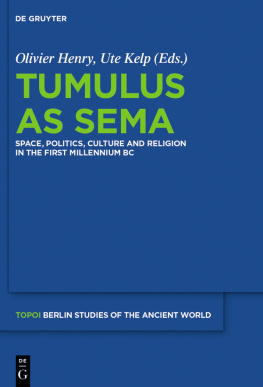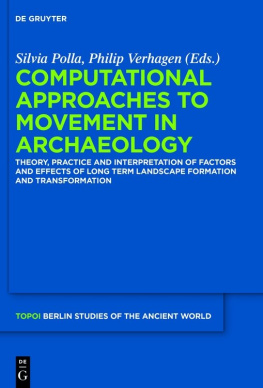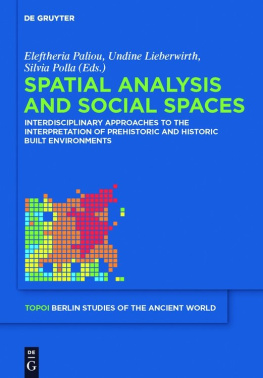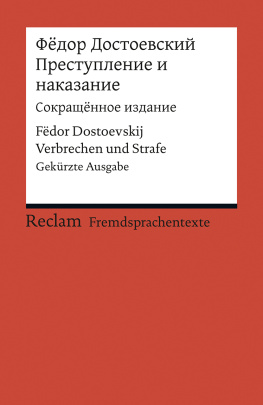Daniel Mai
Organizational Cultures of Remembrance
Media and Cultural Memory/
Medien und kulturelle
Erinnerung
Edite d by
Astrid Erll Ansgar Nnning
Editorial Board
Aleida Assmann Mieke Bal Vita Fortunati Richard Grusin Udo Hebel Andrew Hoskins Wulf Kansteiner Alison Landsberg Claus Leggewie Jeffrey Olick Susannah Radstone Ann Rigney Michael Rothberg Werner Sollors Frederik Tygstrup Harald Welzer
Volume 21

A dissertation, submitted to Faculty 05 Language, Literature, Culture at Justus-Liebig-University Giessen.
ISBN 978-3-11-042563-5
e-ISBN (PDF) 978-3-11-042068-5
e-ISBN (EPUB) 978-3-11-042082-1
ISSN 1613-8961
Library of Congress Cataloging-in-Publication Data
A CIP catalog record for this book has been applied for at the Library of Congress.
Bibliographic information published by the Deutsche Nationalbibliothek
The Deutsche Nationalbibliothek lists this publication in the Deutsche Nationalbibliografie; detailed bibliographic data are available on the Internet at http://dnb.dnb.de .
2015 Walter de Gruyter GmbH, Berlin/Boston
Cover illustration: DKW Junior body shell at the new Auto Union GmbH plant in Ingolstadt, 1960. Source: Corporate archive of AUDI AG
Typesetting: Konrad Triltsch, Print und digitale Medien GmbH, Ochsenfurt
www.degruyter.com
Acknowledgements
My debts are many, and it is a great pleasure to acknowledge them. First and foremost, I would like to thank for the unrelenting support of the International Graduate Centre for the Study of Culture (GCSC), which provided an intellectual home for me. The GCSC not only granted me the financial project support and the security of a three-year scholarship, but also provided a stimulating atmosphere in which it was a pleasure to work. My primary debt at the GCSC is to Ansgar Nnning and Andreas Langenohl, who advised me throughout the dissertation process, believed in me, and helped me overcome the occasional low point. Moreover, I would like to thank my Giessen-based colleagues at the IPP colloquium and the social sciences colloquium, most notably Floris Biskamp, for providing insightful feedback and enriching this phase of my life. Lauren Greyson, thank you for editing my work and making the final steps a rewarding experience.
The original idea for this project emerged during my last year at Zeppelin University in 2009. In this respect, I owe a lot to the critical input of Dirk Baecker, Tony Waters, and Hans Ulrich Gumbrecht. Furthermore, I would like to acknowledge Frank Erik Pointner and Michael Gassenmeier from the University of Duisburg-Essen, as well as Martin Butler from Oldenburg University who first took me under their academic wings as a college freshman, laying the groundwork for the wish to pursue a PhD.
Without a question, this research project would not have been possible without the openness and genuine interest I encountered at AUDI AG. A great number of individuals were willing to share their precious time, experience, and knowledge with me over the course of an entire year. Special acknowledgement goes to Thomas Frank and his committed staff at Audi Tradition for the immense support and trust invested in me. In addition to letting me join your daily working lives, you opened many doors inside the company and vouched for my research activities, all while letting me pursue an independent approach uninhibited by a corporate agenda.
Finally, I am particularly grateful to my loving parents, Holm and Jana Mai, without whose unconditional support on all fronts I could never have managed to endure this journey no matter whether I was working on this project in Giessen, Ingolstadt, Copenhagen, New York, or Berlin. This book is dedicated to you.
| Berlin, April 2014 | Daniel Mai |
1 Introduction
, 2008, p. 92) demonstrates.
When it comes to time modes, however, the neglected topic in the business world.
1.1 When Business Organizations Remember their Past
Despite the prevalence of future-uniqueness of identity based on their past as a means of standing out in the marketplace.
References to the (2009) with its Historische Gesellschaft der Deutschen Bank e.V. (cf. Schug, 2003).
memory.
A new field of research called organizational memory studies devoted to scrutinizing this greater phenomenon has slowly emerged in the last decades (e.g., Schug, 2003). All of these fields are operating with various conceptions of memory in organizations while covering different sub-sets of the same problem namely how and why organizations deal with experiences of the past in the present. Depending on their scope, numerous scholars have approached this question from different angles, and they offer a correspondingly disparate array of explanations. An interdisciplinary discourse about the relationships between memory, identity, and image in business organizations which attempts to synthesize multiple perspectives does not yet exist.
This book is essentially driven by the urge to fill the concrete research gaps identified in a preliminary inquiry that provided a detailed overview of existing literature (viz., , a short rendition provides at least an initial idea of this books starting point.
While many individuals in the western world spend a significant amount of time and energy in companies, empirical evidence of how exactly organizational memory is constituted and operates in everyday practice is extremely scarce (retrospection in real-life business remains untested, and one can, at best, only form hypotheses with regards to its functioning. Likewise, claims about the effective coordination and control of memory in a corporate setting can be taken with a grain of salt as long as proclamations of cause and effect are not backed up by proper empirical research.
collective, historically and culturally situated practice (p. 880) an idea that this study picks up and implements. However, more pronounced insights into the cultural fabric, social nature, and multiplicity of such practice(s) are, in large part, missing.
Third, the majority of scholarly inquiries do not differentiate between the formal side of what is officially recollected in the name of the company and the informal side that occurs on the ordinary member level. How employees are themselves influenced by the company in their historical thinking and the conceptualization of an organizational self through organizational remembrance is an under-researched topic especially when it comes to the internal impact of corporate history departments and museums (cf. Nissley & Casey, 2002). In consequence, the contingencies inherent to the formal and informal dimensions are virtually unknown.
Fourth, scholarly inquiries into organizational memory are often limited to physical knowledge Bishop, 1974), or in the rare case that the social component of human interaction is taken into consideration to the aspect of oral narratives solicited from employees (e.g., Linde, 2009). The existence of other cultural forms in the material, social, and mental dimensions of organizational life has not been accounted for in a holistic way yet (cf. Feldman & Feldman, 2006).
Fifth, organizational culture and identity studies have long perpetuated the belief in an indelible link between history and identity ( & Rowlinson, 2006; Rowlinson et al., 2010).
And sixth, the discourse on organizational memory happens to be detached from newer findings brought forward by its interdisciplinary counterpart, collective/cultural memory studies (e.g., Levy, 2011). And the latter field has not yet come to think of business organizations as a viable object of study. An interdisciplinary link between both fields that fruitfully builds upon the latest research is lacking. The following section outlines what this book aims to achieve in light of these research gaps.










